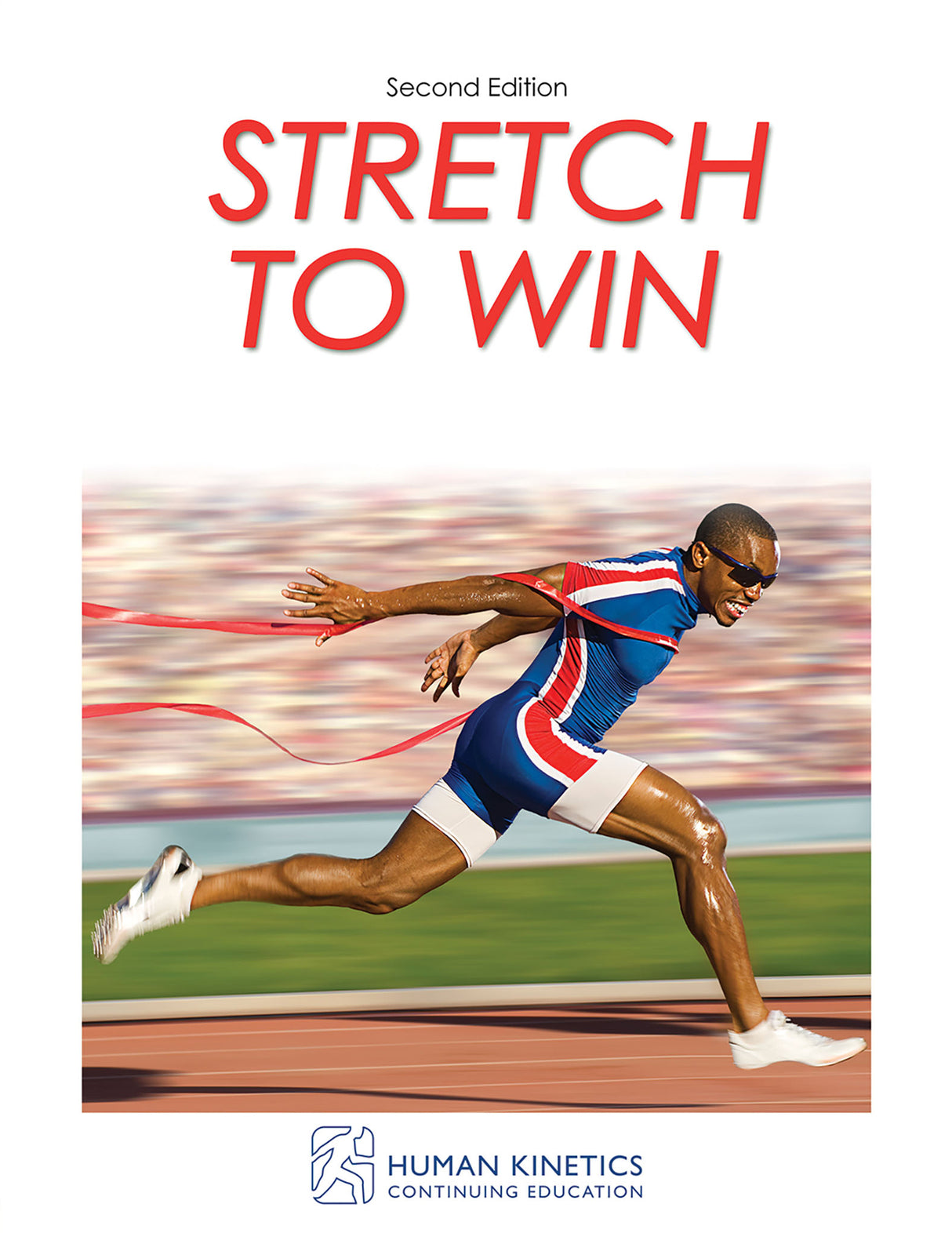Stretch to Win 2nd Edition Online CE Course With Ebook
Author: Human Kinetics
$67.00 USD
Human Kinetics strongly recommends that you complete your exam within the calendar year of your date of purchase to ensure approved credits do not expire for your organization.
This package includes the following:
- Stretch to Win, Second Edition, ebook
- Online study guide
- Practice exam
- Online continuing education exam
In Stretch to Win, Second Edition, Ann and Chris Frederick share their complete flexibility training system, proven to increase mobility, improve range of motion, boost recovery, and more. Made up of dynamic stretches that mirror sport-specific movement, this newest edition builds on the program by incorporating more research evidence, specifics on assessment, and more stretching options.
Illustrations of the body’s fascia will help you understand how to assess and identify imbalances. You’ll learn the techniques to eliminate these imbalances with corrective stretch movements that quickly improve mobility. You’ll also learn the most effective techniques for each sport, position, or event and be prepared to put these techniques into action with your clients.
Using the Stretch to Win fascia mobility assessment (FMA) protocol, you’ll determine range of motion deficits and identify performance inhibitors. With the stretching matrix, you’ll personalize a program developed for your client’s needs and goals. You can incorporate the matrix into existing workouts as well as into rest days, because stretching can aid in recovery and bring your body back in balance.
It’s all here—the tools, the stretches, and the instruction to create an effective flexibility program for any sport or activity. If you’re ready to help your clients increase mobility, power, speed, agility, range of motion, and overall performance, you need Stretch to Win!
Once you complete the course, certified professionals can take the companion CE exam to earn continuing education credits.
Learning Objectives
- List the 10 principles that form a foundation for a flexibility program.
- Describe the anatomy and physiology of the fascial mobility nets throughout the body.
- Identify the specific nets for each part of the body, and list all the key muscles and associated fascia that connect to each other.
- Recognize the different types of fascial mobility blocks that can affect movement and mobility.
- Explain the differences between traditional stretching techniques and fascial mobility training in the form of dynamic stretching.
- Identify the proper parameters that can be used in flexibility training to individualize and improve performance results.
- Describe how flexibility can have an impact on athletic performance parameters, such as power, strength, and speed.
- Determine any impediments to fascial movement through the use of an accurate fascia mobility assessment (FMA).
- Create an appropriate self-stretching program by modifying the stretching parameters and performing self-myofascial release (SMFR).
- Perform the Great 8 and the Fascia 5 stretches in order to increase, correct, maintain, and recover mobility of the core and the rest of the body.
- Perform assisted stretching in a floor routine or table routine to dramatically increase an athlete’s range of motion (ROM).
Audience
Certified strength and conditioning professionals looking to learn more about stretching and its role in performance.
Chapter 1. Ten Principles for Optimal Flexibility
Chapter 2. Anatomy and Physiology of Flexibility
Chapter 3. Flexibility Training
Chapter 4. Flexibility for Sport Performance
Chapter 5. Flexibility Assessment
Chapter 6. Stretches for Fundamental Mobility
Chapter 7. Dynamic Stretches for Sports
Chapter 8. Assisted Stretching





